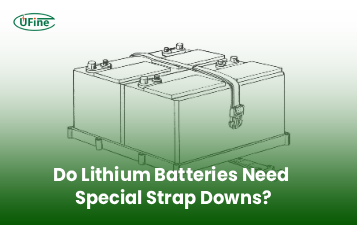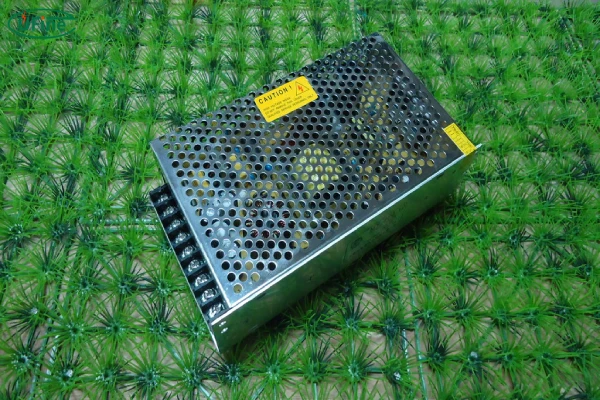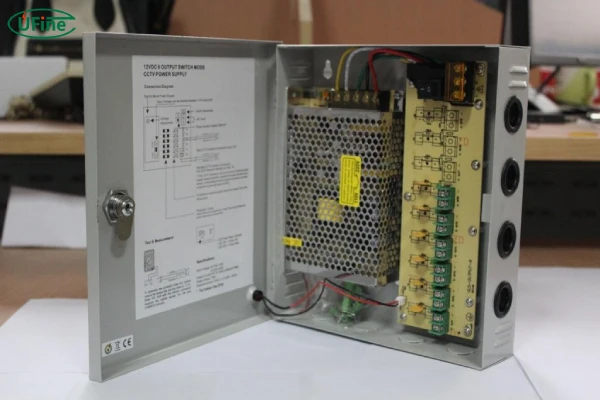
- Part 1. Overview of a 24v power supply
- Part 2. Working principle of a 24v power supply
- Part 3. Types of 24v power supplies
- Part 4. Key parameters of a 24V power supply
- Part 5. Can I use a 24v power supply on a 12v device?
- Part 6. What is a 24v power supply used for?
- Part 7. 24v Power supply vs. 12v power supply: what’s the difference?
- Part 8. common faults and troubleshooting
Imagine this: you’re setting up a complex system, maybe in your workshop or for a new machine, and you’re suddenly faced with choosing the right power supply. The choices can feel overwhelming, especially when every detail matters. One option that stands out for both versatility and power is the 24V power supply. This type of power supply isn’t just any regular power source—it’s a balanced solution offering efficiency, reliability, and power, all rolled into one compact unit. In this guide, we’re diving deep into everything you need to know about 24V power supplies, from understanding how they work to how they’re applied in real life and, of course, troubleshooting when things go wrong. If you’re looking to understand 24V power supplies in a way that feels both practical and relatable, keep reading.
Part 1. Overview of a 24v power supply
At its core, a 24V power supply converts a certain level of incoming voltage, usually AC (alternating current), into a stable 24V DC (direct current) output. Why is this conversion so critical? Most of the devices we use, especially in industrial and commercial settings, need DC power to function reliably. Without a steady power source, electronic systems can run poorly or, worse, get damaged over time.
So why is 24V a common choice? The 24V level provides an excellent balance: it’s powerful enough for medium-to-heavy-duty applications, yet safe and manageable. For example, unlike higher voltages, 24V doesn’t produce excessive heat, making it a practical and safer choice for various setups. When you’re choosing a 24V power supply, you’re opting for a solution that’s as versatile as it is efficient.
Key Characteristics of a 24V Power Supply:
- Stability: Offers a consistent output that’s essential for smooth device performance.
- Safety Features: Often includes protections against short circuits, overcurrent, and overheating, reducing risks to connected devices.
- Flexibility: Suitable for various applications, from powering lights to operating industrial equipment.
Understanding these traits can help you see why 24V power supplies are trusted across many fields, from automation systems to DIY projects.
Part 2. Working principle of a 24v power supply
A 24V power supply doesn’t simply produce a stable DC current—it undergoes a series of transformations that make this possible. Let’s take a closer look at the components that allow a 24V power supply to work its magic:
- Transformer: This essential part first reduces the high input voltage (usually AC) down to a safer, manageable level.
- Rectifier: After the voltage is stepped down, the rectifier comes into play. This component converts the AC into DC current, which, at this point, is still somewhat rough.
- Filter: The filter, often using capacitors, smooths out the DC current by removing fluctuations, creating a more stable flow.
- Voltage Regulator: Finally, the voltage regulator ensures the output stays consistently at 24V, regardless of changes in the load or input. This stability is crucial, as inconsistent voltage can lead to device malfunctions or even damage.
Each part is like a member of a well-coordinated team, working together to provide clean, stable, and reliable power. When these components are in sync, your devices benefit from a constant 24V DC output—ideal for anything from precision equipment to LED setups.
Part 3. Types of 24v power supplies
Depending on your needs, 24V power supplies come in different forms. Each type brings its own unique benefits and is suited to specific applications. Here’s a look at the main types:
- Linear Power Supply: Known for minimal noise and stable output, linear power supplies are ideal for audio equipment and sensitive electronics. Although less efficient and bulkier, they provide a clean power output.
- Switching Power Supply (SMPS): A modern choice, switching power supplies are compact and highly efficient. They rapidly switch the input on and off, delivering the desired voltage with minimal heat, perfect for energy-efficient setups.
- Regulated Power Supply: Maintains a steady 24V output even when there are fluctuations in the input or load. This type is particularly beneficial for electronics that demand precise, stable voltage.
- Unregulated Power Supply: Unlike regulated supplies, this type can fluctuate with changes in the input. These are usually cheaper and work best for applications where slight voltage variations are tolerable.
- AC-DC Power Supply: Converts AC input to a 24V DC output, offering flexibility for systems that need stable DC power from standard AC outlets.
Each type has its own strengths, and understanding the differences can help you choose the right one for your specific requirements.
Part 4. Key parameters of a 24V power supply
To make an informed choice, you’ll need to look beyond just the “24V” label. Here are some of the most important parameters that define the quality and suitability of a 24V power supply:
- Output Voltage: This should be stable at 24V. Even minor fluctuations can impact performance in sensitive devices.
- Output Current: Measured in amps, this tells you how much current the supply can deliver. Choose a power supply that meets or exceeds your device’s current requirements.
- Wattage: A combination of voltage and current, wattage represents the power capacity. Make sure the wattage is sufficient for your devices’ needs.
- Efficiency: Higher efficiency means less wasted energy. Opt for a high-efficiency power supply if you’re running the device for long hours.
- Load Regulation: Indicates how stable the output voltage remains as the load changes. The more stable, the better.
- Ripple and Noise: Low ripple and noise are crucial for sensitive electronics. Look for specifications that promise minimal interference.
- Operating Temperature Range: If you’re using your power supply in extreme conditions, ensure it can withstand the environment.
These parameters are critical, and they directly influence how well your power supply will perform in real-world conditions.
Part 5. Can I use a 24v power supply on a 12v device?
This is a common question, and the answer is generally “No.” A 24V power supply delivers twice the voltage a 12V device is designed to handle, which can lead to overheating, damage, or even complete failure. If you’re in a pinch and only have a 24V supply, consider using a DC-DC converter to safely step down the voltage to 12V. However, it’s almost always better to use the correct power supply for the device to avoid the risk of serious damage.
Part 6. What is a 24v power supply used for?
The applications for a 24V power supply are incredibly varied. Here are some of the most common uses:
- Industrial Equipment: A 24V supply powers motors, conveyor belts, and other machinery, especially in automated production environments.
- LED Lighting: The stable 24V output is perfect for powering LED strips and other lighting systems without causing flickering.
- Telecommunications Equipment: Many routers, switches, and signal amplifiers rely on 24V power supplies to ensure stable operation.
- HVAC Controls: Heating, ventilation, and air conditioning systems often use 24V power supplies for their control systems.
- Electric Vehicles and Mobility Aids: Small electric vehicles and mobility aids, like scooters and wheelchairs, are powered by 24V battery systems.
- CCTV and Security Systems: Many security systems, including cameras and alarm devices, require a reliable 24V supply.
- 3D Printers and Other DIY Projects: Makers and hobbyists often use 24V power supplies to run 3D printers and other DIY setups because of the balance of power and stability they offer.
Knowing the range of applications highlights why 24V power supplies are so popular—they’re flexible and dependable for an impressive range of devices.
Part 7. 24v Power supply vs. 12v power supply: what’s the difference?
While both 24V and 12V power supplies serve their purpose, they are best suited for different situations. Here’s how they differ:
- Power and Efficiency: A 24V power supply is generally more efficient than a 12V one for high-powered devices, as it requires less current to deliver the same power, reducing heat generation.
- Safety: Higher current at 12V can lead to overheating, so 24V is preferred for applications that demand more power.
- Device Compatibility: 12V power is more common for smaller electronics, like household items and automotive devices. 24V, on the other hand, is often found in industrial equipment and large-scale setups.
- Battery Life: Devices designed for 24V generally offer longer battery life, as the power is distributed more efficiently.
Mastering the 12V Power Supply: Your Essential Guide
Part 8. common faults and troubleshooting
Even the best power supplies can run into issues. Here are some common problems and quick troubleshooting tips:
- Overheating: This is often caused by overloading. Ensure the supply has proper ventilation and is not exceeding its maximum output.
- Output Voltage Issues: Fluctuations in output can stem from damaged components or an unstable input source. Try changing the load or checking the input power.
- Short Circuits: A common problem, often due to loose connections or exposed wires. Inspect the wiring carefully and replace any damaged components.
- Noise or Interference: Switching power supplies can sometimes produce noise. Consider using a power supply with noise reduction features if you’re experiencing issues.
By understanding these fundamentals, you can feel more confident in choosing and maintaining a 24V power supply for a range of uses. Whether you’re an industry professional or a DIY enthusiast, the insights here offer a practical way to navigate the world of 24V power with ease and confidence.
Related Tags:
More Articles

Do Lithium Batteries Require Special Strap Downs? (Safety + Vibration Control)
Discover why lithium batteries require special strap downs to prevent vibration damage, terminal stress, and internal component issues.
Battery Strap Down Safety Tips: Preventing Vibration Damage and Terminal Stress
Follow these expert battery strap down safety tips to prevent vibration damage, terminal stress, and ensure LiFePO4 battery longevity.
How to Choose a Good 18650 Battery with Reliable Quality?
Battery quality defines performance and safety. Ufine Battery shares how to source good 18650 batteries and avoid unstable suppliers.
Can I Use a Universal Battery Strap Down on LiFePO4 Batteries? (Compatibility Guide)
Learn whether universal battery strap downs are compatible with LiFePO4 batteries, and how to install them safely for vibration control.
Battery Strap Down vs Battery Hold-Down Bracket: What’s the Difference?
Compare battery strap downs and hold-down brackets. Learn key differences, installation tips, and which is safer for lithium batteries.




